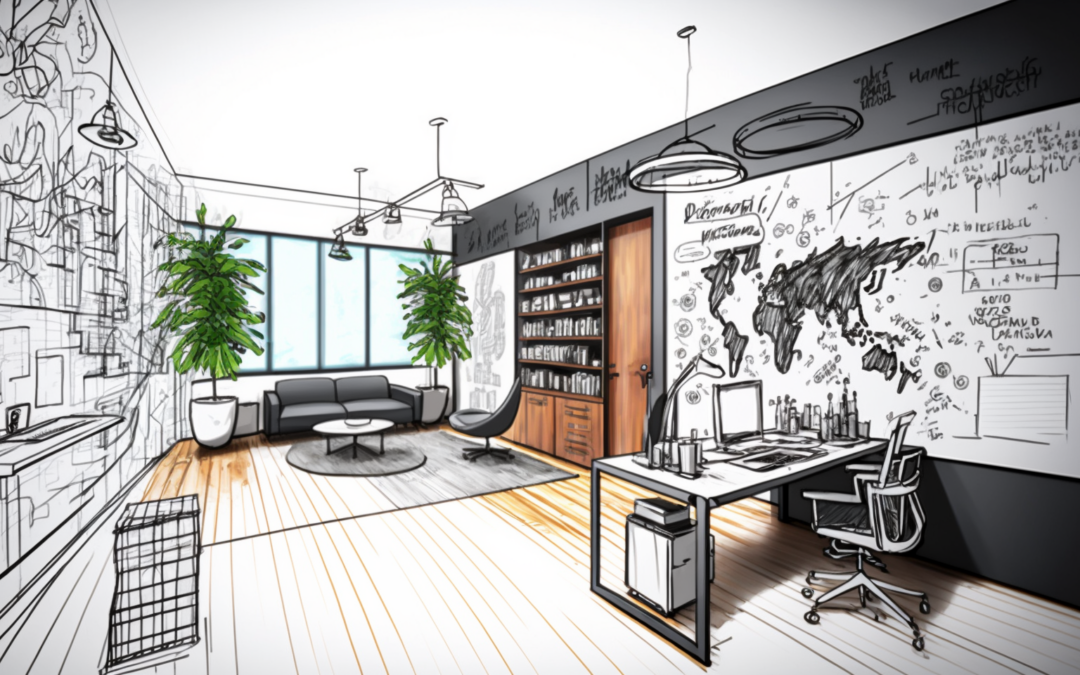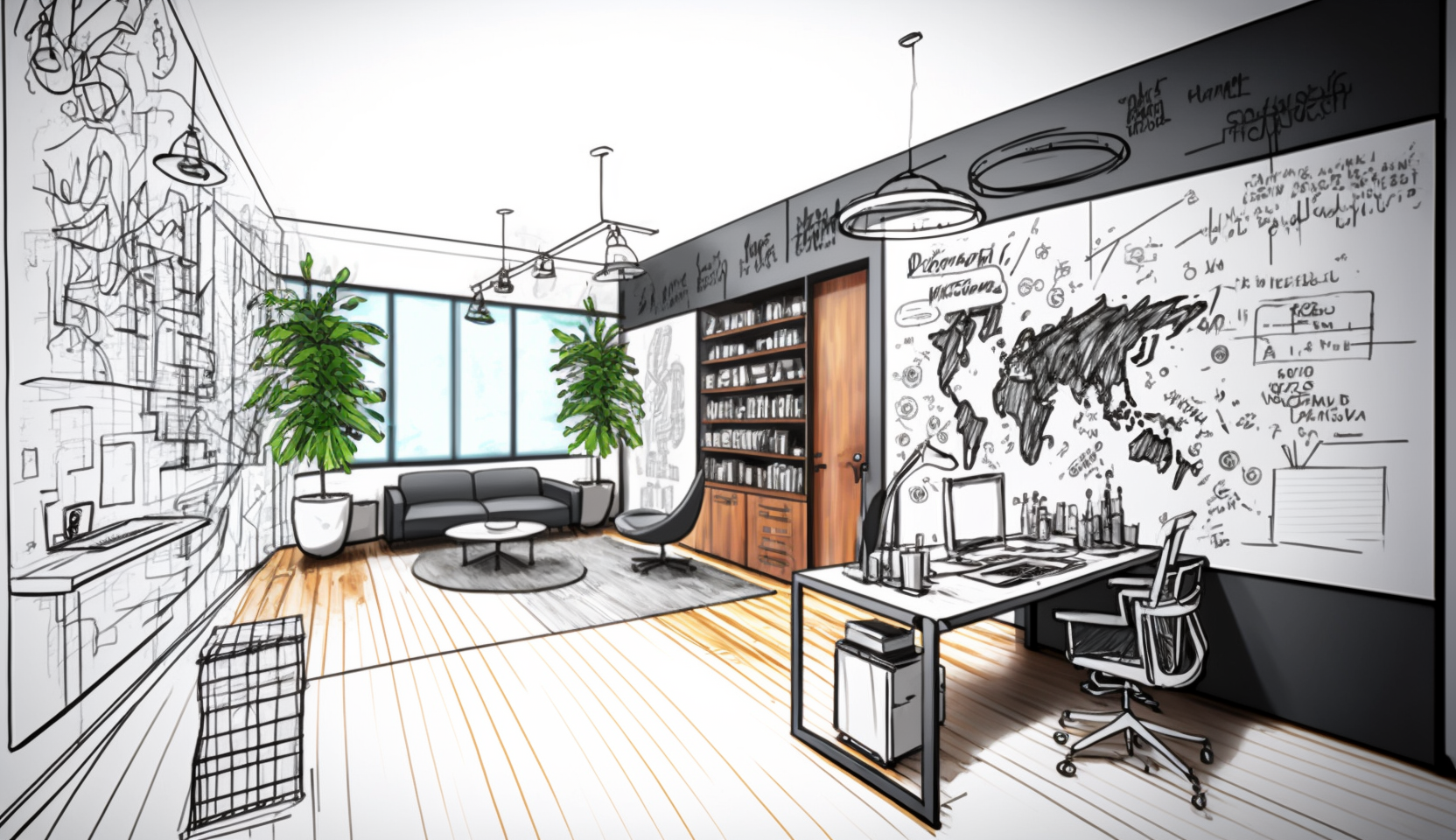The Role of Commercial Dry Erase Walls in Sustainable Architecture
In sustainable architecture, the role of commercial dry erase walls—often called dry erase painted walls—is nothing short of transformative. Architects and designers, as custodians of innovation and sustainability, increasingly recognize these versatile surfaces’ indispensable value. Commercial dry erase walls have emerged as game-changers, offering a canvas for eco-conscious design and a testament to the commitment towards greener, more environmentally responsible building practices.
This in-depth article will discuss the important role of commercial dry erase walls in sustainable architecture. With a spotlight on their energy-efficient attributes, sustainable material choices, and overall environmental impact, we aim to equip architects and designers with invaluable insights, actionable tips, and compelling examples that resonate with our diverse audience.
Energy-Efficient Innovation
Commercial dry erase walls are at the forefront of energy-efficient innovations within sustainable architecture. These walls, often coated with eco-friendly dry erase paint, offer a multifaceted approach to energy conservation. Firstly, they excel in optimizing natural lighting. By virtue of their reflective surfaces, they bounce daylight deeper into interior spaces, reducing the need for artificial lighting during daylight hours. This simple yet effective approach conserves energy and enhances the overall well-being of occupants by providing natural, mood-boosting illumination.
Furthermore, the insulating properties of dry erase painted walls contribute significantly to energy efficiency. They act as thermal barriers, helping maintain stable indoor temperatures. This reduces the demand for heating and cooling systems, ultimately lowering energy consumption and the associated carbon footprint. Architects and designers keen on sustainable practices have come to appreciate this dual benefit – enhanced lighting and reduced energy consumption – that commercial dry erase walls bring to their projects.
Sustainable Material Choices
Adopting an eco-friendly approach to design is essential for creating sustainable architecture, and commercial dry erase painted walls are a prime example of this commitment. These structures are generally constructed using materials strictly chosen with the environment in mind, often featuring low-VOC paints and coatings. The integration of these components significantly decreases the presence of hazardous waste products in the air, ensuring healthy indoor air quality while minimizing production’s ecological impact.
In addition to low-VOC paints, some commercial dry erase wall products incorporate recycled materials into their composition. This further reduces the consumption of virgin resources and promotes resource conservation. Architects and designers seeking to achieve sustainability targets increasingly turn to such innovative materials, recognizing that every component counts in the quest for eco-friendly design.
Functional Aesthetics
Dry erase walls blend functionality and aesthetics, a hallmark of modern sustainable architecture. These walls, whether installed in offices, educational institutions, or healthcare facilities, are interactive canvases promoting creativity and collaboration. The visual appeal they bring to a space enhances the overall quality of the environment, making it more inviting and engaging.
Architects and designers, in their pursuit of sustainability, often find that commercial dry erase walls offer a unique opportunity to integrate both form and function. These walls become focal points within spaces, encouraging interaction and ideation. The versatility they offer, from serving as presentation surfaces to artistic expressions, elevates the design while keeping sustainability at the forefront.
Reducing Environmental Footprints
Sustainability in architecture extends beyond energy efficiency and materials; it encompasses the entire lifecycle of a building. Dry erase walls reduce the environmental footprint by virtue of their longevity and ease of maintenance. Unlike traditional chalkboards or whiteboards that require periodic replacement, these walls are designed to withstand years of use.
The longevity of commercial dry erase walls translates to reduced waste generation. Fewer replacements mean fewer discarded materials, aligning with the principles of sustainability. Moreover, these walls are low-maintenance. Cleaning them involves simple wiping with a dry or damp cloth, eliminating the need for harsh chemicals and disposable cleaning materials that harm indoor air quality and contribute to waste.
Promoting Sustainable Practices
Architects and designers are increasingly turning to dry erase painted walls due to their ability to promote sustainability. These walls offer a platform for dynamic brainstorming, eliminating the need for paper-based operations and furthering conservation efforts. Utilizing these surfaces encourages a culture of environmental stewardship in the workplace.
Furthermore, the transition to digital collaboration on commercial dry erase walls aligns with contemporary sustainable practices. The elimination of printed materials and the reduction in disposable presentation aids contribute to resource conservation. Sustainable architecture is not just about the result but also the processes employed, and commercial dry erase walls are helping to reshape these processes for the better.
Future Prospects in Sustainable Architecture
The future of sustainable architecture is promising, and dry erase walls have a significant part to play. Architects and designers continually strive to devise evermore eco-friendly designs, and these walls provide an essential conduit for novel ideas. As the demand for more sustainable design increases, we can anticipate further imaginative uses of dry erase painted walls in green architecture.
Materials and construction techniques that promote sustainability are paving the way for revolutionary advances in the industry. Of the many green building solutions available, dry erase walls stand out as a versatile and practical option. As the demand for sustainable design grows, green building solutions such as these walls will become increasingly important in the future.
Improving Indoor Air Quality
Improving indoor air quality is crucial for sustainable architecture as it directly affects the well-being of building occupants. For businesses, dry erase walls offer a great solution; they are coated with low-VOC paints that produce fewer harmful fumes than traditional chalkboards or whiteboards. Therefore, when considering adequate indoor air quality, these walls can be important in ensuring a safe and inviting environment.
Moreover, the maintenance of commercial dry erase walls involves minimal chemical use. Cleaning these surfaces typically requires only a dry or damp cloth, reducing the reliance on chemical cleaning agents that can negatively impact indoor air quality. By prioritizing the well-being of occupants and minimizing air pollutants, architects and designers demonstrate their commitment to sustainable, healthy building practices.
Innovative Design Flexibility
Architects and designers are always looking for ways to push the boundaries of design and functionality in sustainable architecture. Commercial dry erase walls offer an innovative approach to design flexibility. These walls can be seamlessly integrated into various architectural styles and spaces, from corporate offices to educational institutions. Their adaptability allows architects to incorporate interactive elements into their designs while maintaining the eco-friendly aspects of sustainability.
Additionally, these walls provide a dynamic platform for artistic expression. Whether used for educational purposes or as a canvas for artwork, these walls promote creativity and engagement. This innovative design flexibility adds a layer of uniqueness to sustainable architectural projects, creating visually appealing and environmentally responsible spaces.
Conclusion
In conclusion, commercial dry erase walls are functional components of sustainable architecture and catalysts for creativity, innovation, and eco-conscious design. Architects and designers who embrace these walls find themselves at the intersection of functionality and sustainability. Through their energy-efficient properties, sustainable material choices, aesthetic appeal, and role in reducing environmental footprints, dry erase walls are shaping the landscape of modern architecture.
By adopting these walls, architects and designers are not only enhancing the quality of indoor spaces but also contributing to a greener planet. Sustainability in architecture involves making conscious decisions that benefit the environment and the occupants’ well-being. Commercial dry erase painted walls have proven their worth, offering a sustainable solution that promotes collaboration, creativity, and a brighter future for architecture. As sustainable architecture continues to evolve, these walls will remain a driving force in reshaping how we design and build our environments.



Recent Comments